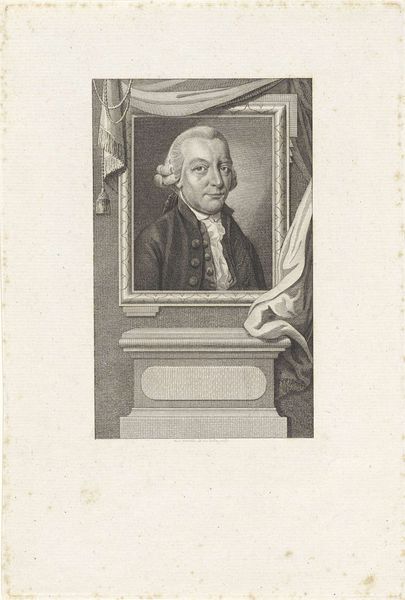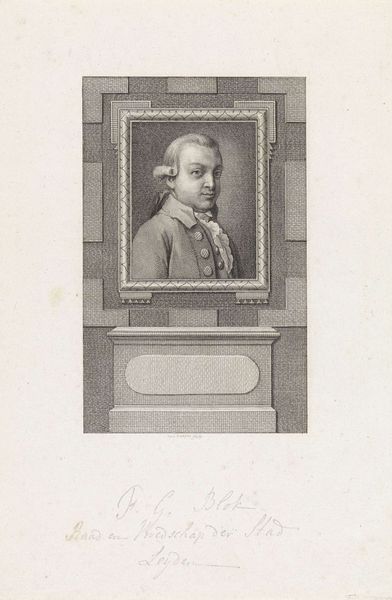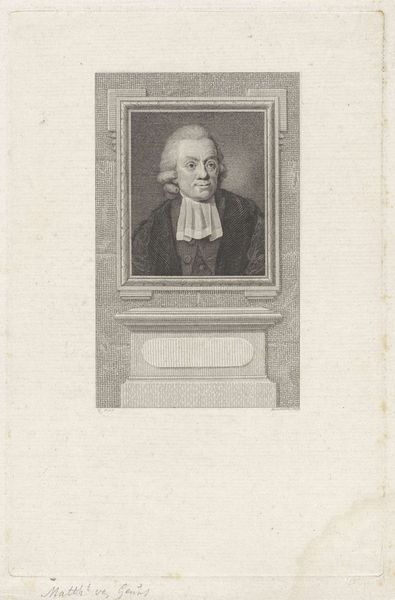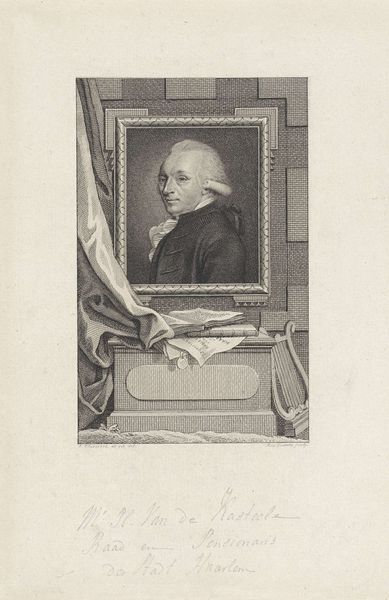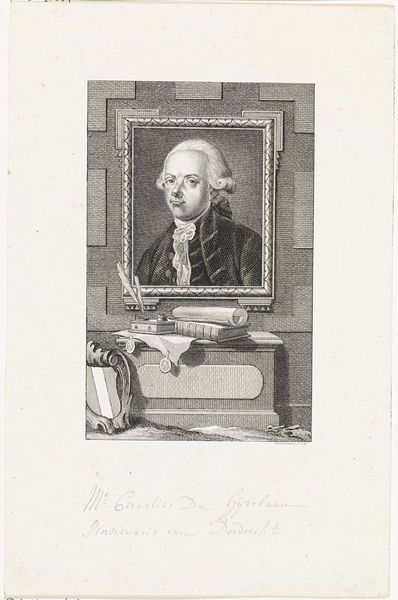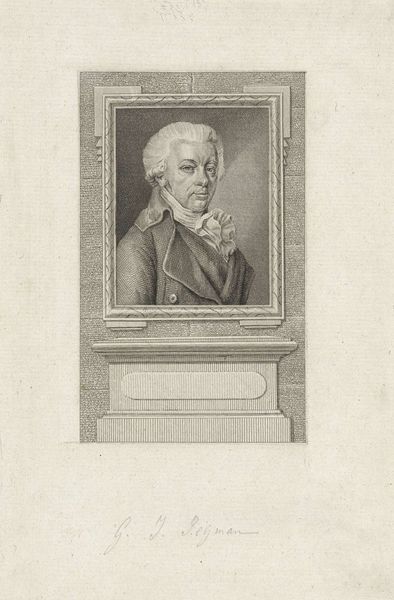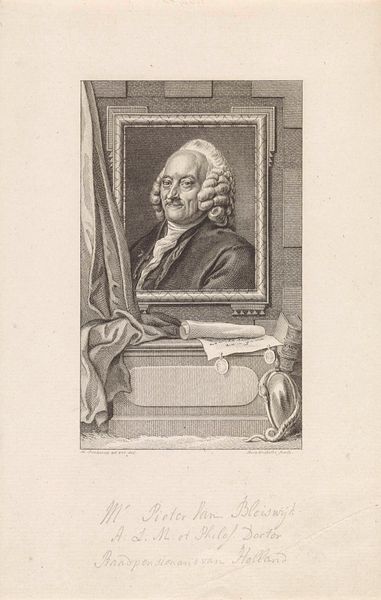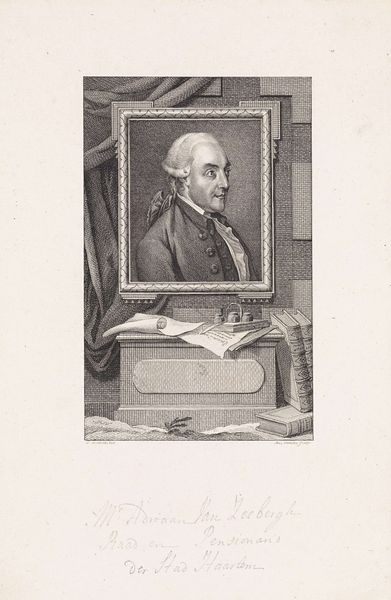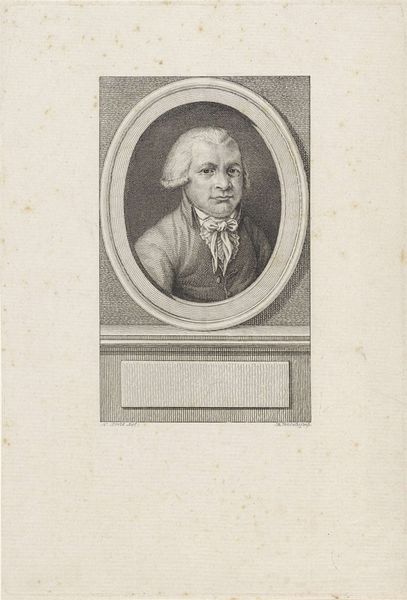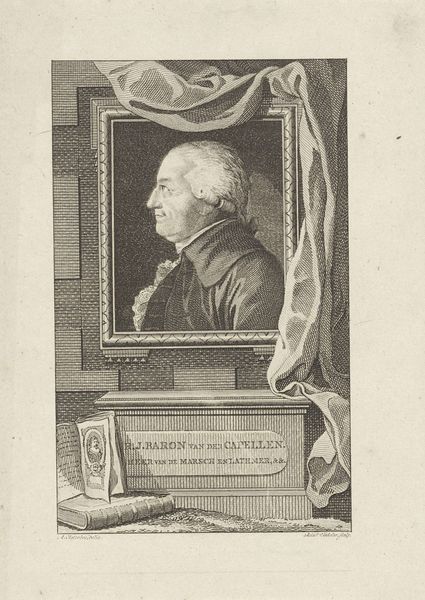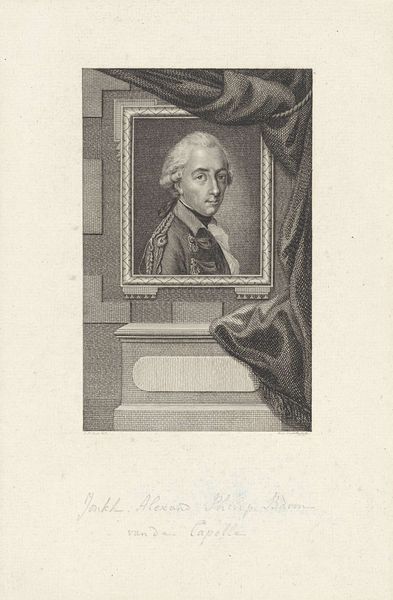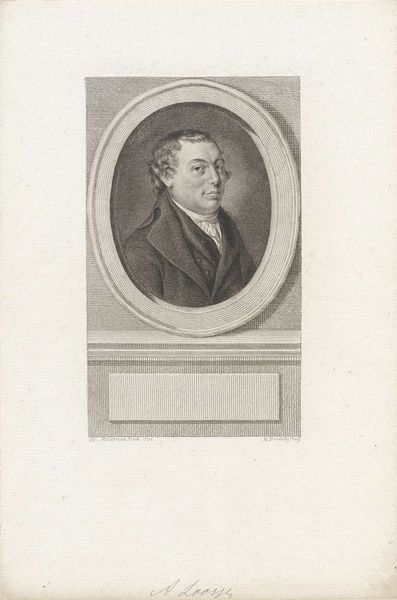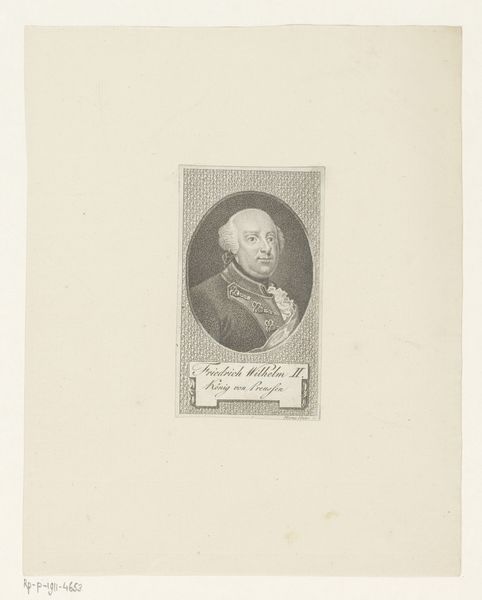
print, engraving
#
portrait
#
neoclacissism
# print
#
old engraving style
#
history-painting
#
engraving
Dimensions: height 231 mm, width 153 mm
Copyright: Rijks Museum: Open Domain
Curator: This engraving, dating from between 1786 and 1809, presents a portrait of Isaak van Goudoever. Reinier Vinkeles, a Dutch artist known for his detailed prints, created this piece, which is now part of the Rijksmuseum collection. Editor: The man in the engraving seems quite stern. He gazes directly at us. And, is that a tiny guillotine pendant dangling around his neck? What could it signify, placed so prominently on this man's chest? Curator: Given that timeframe and the rise of neoclassicism, we see the symbolic power in these representations. Van Goudoever was a prominent figure. Portraits, especially in this neoclassical style, became important vehicles for constructing and disseminating a vision of civic virtue and masculine authority, solidifying power. Editor: And the austere rendering really underscores that idea, doesn’t it? There is the use of line to construct not just an image but almost an icon. That tiny guillotine almost becomes a religious emblem for a new age, which I assume reflects changing societal views? It speaks volumes about societal anxieties and the shifting tides of power. It's quite the stark emblem of a revolution, condensed onto a single individual. Curator: Precisely. These emblems tell us of that historic moment. The way he’s framed within the engraving mirrors how such individuals were consciously framed within the broader narrative of history itself. These images reinforced societal hierarchies. Consider that as this was widely circulated as a print, its effect must have been enormous! Editor: Absolutely. Seeing how Vinkeles renders this portrait in such detail, paying close attention to every button, fold and contour… you sense this almost painstaking intention to instill meaning. As such, this piece showcases both the artistic trends and deeper societal narratives that the artwork embodies, from personal adornment to the larger political events of that era. Curator: Indeed. It allows us to reflect on how representations, whether paintings, engravings, or something else, were used to fashion ideas about power, and what the enduring effects might be even today.
Comments
No comments
Be the first to comment and join the conversation on the ultimate creative platform.
